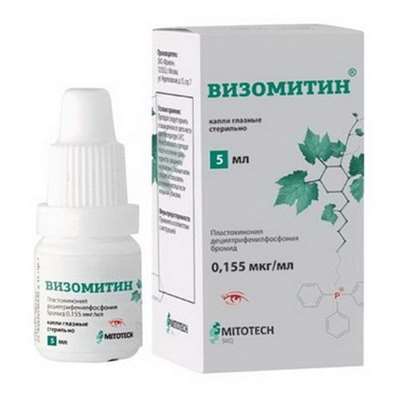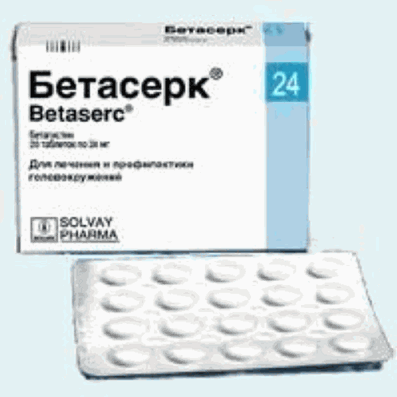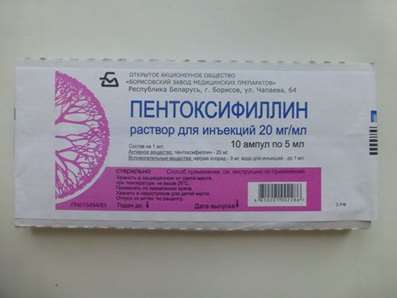Instruction for use: Zipantola
I want this, give me price
Active substance Pantoprazole
ATX code A02BC02 Pantoprazole
Pharmacological group
Proton pump inhibitors
Nosological classification (ICD-10)
K21 Gastroesophageal reflux
Biliary reflux esophagitis, gastrocardiac syndrome, Gastroesophageal reflux disease, Gastro-oesophageal reflux disease, Non-erosive reflux disease, syndrome gastrocardiac, Remhelda syndrome, Erosive reflux esophagitis, Ulcerative reflux esophagitis
K25 Gastric ulcer
Helicobacter pylori, Pain syndrome in gastric ulcer, Pain syndrome in gastric ulcer and duodenal ulcer, Inflammation of the gastric mucosa, Inflammation of the gastrointestinal mucosa, Benign gastric ulcer, The disease of the stomach and duodenum, asotsiirovannoe with Helicobacter pylori, Aggravation gastroduodenita on the background of peptic ulcer, Exacerbation of peptic ulcer, The aggravation of gastric ulcer, The organic gastrointestinal disease, Peptic ulcer of the stomach and duodenum, Postoperative gastric ulcer, Recurrent ulcers, Symptomatic gastric ulcers, Chronic inflammatory disease of the upper gastrointestinal tract, associated with Helicobacter pylori, Helicobacter pylori eradication, Erosive and ulcerative lesions of the stomach, Erosive lesions of the stomach, The erosion of the gastric mucosa, Peptic ulcer disease, Stomach ulcer, Gastric lesion, Ulcerative lesions of the stomach, Symptomatic ulcers of the stomach and duodenum
K26 Duodenal Ulcer
Pain with duodenal ulcer, Pain syndrome in gastric ulcer and duodenal ulcer, The disease of the stomach and duodenum, asotsiirovannoe with Helicobacter pylori, Exacerbation of peptic ulcer, The worsening of duodenal ulcer, Peptic ulcer of the stomach and duodenum, Relapse of duodenal ulcers, Symptomatic ulcers of the stomach and duodenum, Helicobacter pylori eradication, Erosive and ulcerative lesions of the duodenum, Erosive-ulcerative lesions of duodenal ulcers associated with Helicobacter pylori, Erosive lesions of the duodenum, Duodenal ulcer, Ulcerative lesions of the duodenum]
K86.8.3 * Zollinger-Ellison Syndrome
Adenoma of the pancreas ulzerogennosti, gastrinoma, Zollinger-Ellison Syndrome, gastrinoma
Composition
Tablets, enteric coated 1 tab.
active substance:
pantoprazole sodium sesquihydrate 22.555 mg/ 45.11 mg
(equivalent to 20 and 40 mg of pantoprazole, respectively)
excipients: mannitol - 78,645 / 157,29 mg; Crospovidone - 2.2 / 4.4 mg; low substituted hyprolosis - 2.2 / 4.4 mg; sodium lauryl sulfate - 1.1 / 2.2 mg; colloidal silicon dioxide - 0.55 / 1.1 mg; talc - 1.65 / 3.3 mg; magnesium stearate - 1.1 / 2.2 mg
film cover: Opadry AMB yellow 80W32009 (partially hydrolyzed polyvinyl alcohol, titanium dioxide, talc, dye iron oxide yellow (E172), varnish based on quinoline yellow (E104) and aluminum, lecithin (soy), xanthan gum) - 8.8 / 17.6 mg
Enteric coating: Eudragit L 30D-55 (methacrylic acid and ethyl acrylate copolymer (1: 1), sodium lauryl sulfate, polysorbate 80, water) - 13.45 / 25.28 mg; glyceryl monostearate - 0.67 / 1.26 mg; triethyl citrate - 1.34 / 2.53 mg; Polysorbate 80 - 0.34 / 0.63 mg
black ink Opacode S-127794, used for writing on the tablets: iron dye black oxide; shellac solution in ethanol; butanol; propylene glycol; isopropanol; ethanol denatured (methylated alcohol)
Description of the dosage form
Tablets, 20 mg: yellow, round, biconvex, enteric-coated, with black inscription "RA 783" - on one side.
Tablets, 40 mg: yellow, round, biconvex, enteric-coated, with black inscription “RA 784” - on one side.
pharmachologic effect
Pharmacological action is an anti-ulcer inhibiting proton pump.
Pharmacodynamics
Pantoprazole is a proton pump inhibitor, selectively inhibits (forms a covalent bond) H + -K + -ATPase of parietal cells, disrupts the transfer of hydrogen ions into the lumen of the stomach, blocks the final stage of the secretion of hydrochloric acid, inhibiting basal and stimulated secretion, regardless of the type of stimulus - acetylcholine , histamine, gastrin. The maximum effect is manifested only in an acidic environment with a pH of less than 3; at higher pH values, it remains practically inactive. Does not affect gastrointestinal motility. Secretory activity is normalized 3-4 days after the end of the reception. Clinical improvement is achieved within 2 weeks. During 4–8 weeks of treatment, the level of gastrin in plasma increases 1.5 times. With prolonged treatment in patients with peptic ulcer disease is accompanied by a slight increase in the number of enterochromaffin-like (ECL) cells.
In duodenal ulcers associated with Helicobacter pylori, the normalization of gastric secretion contributes to an increase in the anti-helicobacter effect of antibiotics.
Pharmacokinetics
Quickly and completely absorbed from the digestive tract. Absolute bioavailability (about 77%) is not associated with food intake. On average, Cmax - 1.5 µg / ml is reached after 2.5 hours for a dose of 20 mg and 2.4 µg / ml - after 2.4 hours for a dose of 40 mg. T1 / 2 - about 1 hour, apparent Vd is about 11–23.6 l, plasma clearance is about 0.1 l / h / kg, AUC - 4.8 µg · h / ml. Plasma protein binding is about 98%, mainly with albumin. Antacids or food intake does not affect Cmax, AUC and bioavailability.
Metabolized in the liver (oxidation, dealkylation, conjugation). It has a low affinity for the cytochrome P450 system, CYP3A4 and CYP2C19 isoenzymes are mainly involved in the metabolism. The main metabolite in the blood plasma and urine is desmethylpanthoprazole (T1 / 2 - about 1.5 hours), conjugated with sulfate. No data on the presence of pharmacological activity of metabolites. Excreted mainly by the kidneys (about 71%) as metabolites, in a small amount (about 18%) is found in the feces. Not cumulated. In some cases, elimination is delayed. Very weakly penetrates through the BBB, secreted into breast milk.
In patients with cirrhosis of the liver (classes A, B according to the Child-Pugh classification), T1 / 2 increases to about 3–6 hours (for a dose of 20 mg) and up to 7–9 hours (for a dose of 40 mg). In renal failure, T1 / 2 does not increase significantly, but the T1 / 2 of the main metabolite reaches 2–3 hours. The increase in Cmax and AUC is not clinically significant in elderly patients.
Indications
gastroesophageal reflux disease (GERD) - treatment of erosive reflux esophagitis, symptomatic treatment of non-erosive reflux disease (NERD);
peptic ulcer and duodenal ulcer (in acute phase), including associated with taking NSAIDs;
Zollinger-Ellison syndrome;
Eradication of Helicobacter pylori in combination with antibacterial agents.
Contraindications
hypersensitivity to the drug;
neurotic dyspepsia;
simultaneous appointment with atazanavir;
breastfeeding period;
children under 12 years of age (insufficient data on efficacy and safety);
children's age up to 18 years with gastric ulcer and duodenal ulcer (in the acute phase), including associated with taking NSAIDs, Zollinger-Ellison syndrome and Helicobacter pylori eradication in combination with antibacterial agents (there is not enough data on efficacy and safety).
With caution: liver failure; renal failure; elderly patients (over 65 years), including a history of gastric ulcer or duodenal ulcer, as well as bleeding from the upper GI tract; pregnancy.
pregnancy and lactation
Data on the use of the drug in pregnant women is limited. Pantoprazole should be used during pregnancy, provided that the expected benefit to the mother exceeds the possible risk to the fetus.
Side effects
The frequency of side effects is classified according to WHO recommendations: very often (more than 1/10); often (more than 1/100, but less than 1/10); infrequently (more than 1/1000, but less than 1/100); rarely (more than 1/10000, but less than 1/1000); very rarely (less than 1/10000).
On the part of the hematopoietic and lymphatic systems: very rarely - leukopenia, thrombocytopenia.
On the part of the immune system: very rarely - anaphylactic reactions, including anaphylactic shock.
On the part of the nervous system: often - headache; infrequently - dizziness, visual disturbances; very seldom - depression, hallucinations, disorientation, clouding of consciousness, especially in susceptible patients, worsening of these symptoms, if they were present earlier.
On the part of the digestive tract: often - pain in the upper abdomen, diarrhea, constipation, flatulence; infrequently - nausea / vomiting; rarely, dry mouth.
On the part of the liver and biliary tract: very rarely - severe damage to the liver parenchyma, leading to jaundice with or without liver failure.
From the skin and subcutaneous fat: infrequently - itching and skin rash; very rarely - urticaria, angioedema, severe skin reactions such as Stevens-Johnson syndrome, erythema multiforme, Lyell's syndrome, photosensitization.
On the part of the musculoskeletal system: rarely - arthralgia; very rarely - myalgia.
On the part of the urinary system: very rarely - interstitial nephritis.
On the part of the body as a whole: very rarely - peripheral edema, fever.
From the laboratory indicators: very rarely - an increase in liver enzymes (transaminase, GGT), an increase in the concentration of triglycerides.
Interaction
Pantoprazole, like other proton pump inhibitors, may decrease or increase the absorption of drugs, the bioavailability of which depends on the pH of the stomach (ketoconazole, itraconazole, atazanavir).
There were no significant interactions between pantoprazole and other drugs such as diazepam, diclofenac, digoxin, glibenclamide, nifedipine, carbamazepine, caffeine, phenytoin, naproxen, piroxicam, theophylline, metoprolol, ethanol, oral contraceptives. However, since pantoprazole is metabolized with the participation of the cytochrome P450 enzyme system, the possibility of interaction with other drugs that are metabolized using these enzymes cannot be completely excluded.
There is no pantoprazole interaction with fenprocumone or warfarin, which was confirmed in pharmacokinetic studies.
There is also no interaction of pantoprazole with antacids simultaneously used.
Dosage and administration
Inside, drinking down with liquid and swallowing whole (tablets can not be crushed or dissolved). The drug can be taken regardless of the meal and antacids.
Adults and children over 12 years old
GERD - treatment of erosive reflux esophagitis, symptomatic treatment of NERD: the recommended dose is 20–40 mg per day. Symptoms usually diminish within 2–4 weeks; 4 weeks are usually needed to treat concomitant esophagitis. In case of insufficient clinical effect, take another 4 weeks. After the symptoms are eliminated, you can take 20 mg once a day in the "on demand" mode. It is possible to switch to long-term therapy at a dose of 20 mg 1 time per day if the on-demand regimen does not stop the symptoms of the disease.
Adults
Peptic ulcer and duodenal ulcer (in acute phase), incl. associated with taking NSAIDs: the recommended dose - 40-80 mg per day. The duration of treatment is 2 weeks with exacerbation of duodenal ulcer and 4–8 weeks with exacerbation of gastric ulcer. Anti-relapse treatment of gastric ulcer and duodenal ulcer - at a dose of 20 mg 1 time per day.
Eradication of Helicobacter pylori: the recommended dose is 40 mg 2 times a day in combination with one of the following combinations:
- Amoxicillin 1 g 2 times a day + clarithromycin 500 mg 2 times a day;
- clarithromycin 250–500 mg 2 times a day + metronidazole 400–500 mg 2 times a day;
- Amoxicillin 1 g 2 times a day + metronidazole 400-500 mg 2 times a day.
Combined treatment should be followed within 7 days. After treatment, pantoprazole can be continued to heal the ulcer. In duodenal ulcer pantoprazole can be extended from 1 to 3 weeks.
Zollinger-Ellison syndrome: starting dose - 80 mg per day. Depending on the secretion of gastric juice, the dosage may be reduced or increased. The daily dose of 80 mg is divided into 2 parts and taken 2 times a day. Perhaps a short-term increase in the dose of pantoprazole above 160 mg. The duration of treatment with Zipantol syndrome Zollinger-Ellison is not limited. The safety of long-term use of the drug Zipantola is well studied. Prolonged use of pantoprazole is as safe as short-term and well tolerated.
Elderly and kidney failure patients
Dose adjustment is not required. However, it is not recommended to take more than 40 mg / day daily. An exception is the eradication therapy of Helicobacter pylori, when patients should take a dose of 40 mg 2 times a day for 1 week.
Patients with severe hepatic impairment
The daily dose should not exceed 20 mg.
Overdose
Symptoms of an overdose are unknown. Doses exceeding 240 mg IV were administered within 2 minutes and were well tolerated.
Treatment: symptomatic therapy. Hemodialysis is not effective.
special instructions
It should regularly monitor the activity of liver enzymes in the blood plasma in the appointment of pantoprazole in patients with severe liver failure, especially with prolonged use. With an increase in the activity of hepatic transaminases in the blood, drug treatment should be discontinued.
In patients with an increased risk of complications of the gastrointestinal tract and long-term NSAIDs, pantoprazole in a dose of 20 mg for the prevention of gastric ulcer and duodenal ulcer should be taken with caution.
It is necessary to use caution with pantoprazole in elderly patients (over 65 years) with a history of gastric or duodenal ulcer, as well as bleeding from the upper GI tract.
Endoscopic control is required before and after treatment to rule out the possibility of malignant diseases of the stomach or esophagus, since treatment may mask symptoms and make it difficult to diagnose correctly.
Reducing the acidity of gastric juice by means of reducing the secretion of gastric glands, including proton pump inhibitors, can contribute to the reproduction of the natural microflora of the gastrointestinal tract, which may slightly increase the risk of developing gastrointestinal infectious diseases caused by Salmonella and Campylobacter.
Pantoprazole, like all drugs that block the production of hydrochloric acid in the glands of the stomach, can reduce the absorption of vitamin B12 due to hypo- and achlorhydria. This should be considered with long-term therapy in patients with low body mass or with an increased risk of reducing the absorption of vitamin B12.
Patients who have symptoms of the disease after 4 weeks of treatment, or taking pantoprazole for a long time (more than 1 year) need additional examination.
Release form
Enteric-coated tablets, 20 mg and 40 mg. At 14 tab. in a blister (oriented polyamide / aluminum foil / PVC / aluminum foil). On 2 blisters in a cardboard pack.
Pharmacy sales terms
On prescription.
Storage conditions
At a temperature not higher than 25 ° C.
Keep out of the reach of children.
Shelf life
2 years.
Do not use after the expiration date printed on the package.

 Cart
Cart





